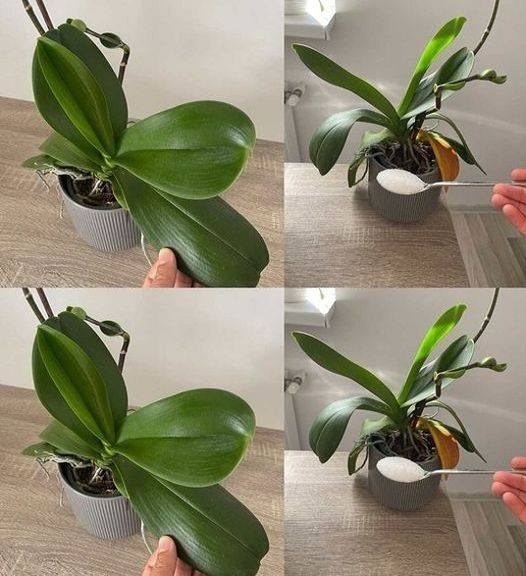ADVERTISEMENT
### **The Secret Ingredient: 1 Tablespoon of Powerful Fertilizer**
Now, let’s get to the heart of the matter: what is this powerful fertilizer that can make your orchids bloom non-stop with just 1 tablespoon? The answer lies in a high-quality, **balanced liquid orchid fertilizer** that contains the right combination of macronutrients and micronutrients, specifically designed for orchids’ unique needs.
These fertilizers typically have an NPK ratio that is appropriate for orchids—usually something like **30-10-10** or **20-20-20**—with additional micronutrients that orchids require for optimal health. But what makes this type of fertilizer so powerful is the way it is applied: just **one tablespoon** per gallon of water.
### **Why 1 Tablespoon Is Enough: Understanding the Dosage**
The beauty of this method is in its simplicity. Orchids are sensitive to the amount of fertilizer they receive, and giving them too much can do more harm than good. The key to success is finding the right balance.
Why does **1 tablespoon** work so well for orchids?
1. **Concentration Matters**: Orchid fertilizers are designed to provide the right amount of nutrients to your plant without overwhelming it. By using a small, controlled amount, you ensure that the orchid receives just the right dose of nutrition.
2. **Preventing Over-Fertilization**: Orchids, like many plants, can suffer from fertilizer burn if given too much. This results in yellowing leaves, brown spots, and a general decline in health. By using just 1 tablespoon per gallon of water, you’re ensuring that your orchids get the nutrition they need without the risk of over-fertilizing.
3. **Slow-Release Benefits**: Many orchid fertilizers are formulated with slow-release properties, meaning the nutrients are absorbed over time. This allows for continuous feeding without the need for frequent applications, making it more efficient and cost-effective.
4. **Promoting Long-Term Health**: A small dose of fertilizer on a regular basis encourages steady, long-term growth and blooming. It ensures that your orchid’s roots and leaves remain healthy, while also supporting the formation of buds and flowers.
### **How to Apply the 1 Tablespoon Fertilizer Solution**
Applying fertilizer to orchids isn’t complicated, but there are some important steps to follow to ensure that you’re getting the best results. Here’s a step-by-step guide to applying the **1 tablespoon** of fertilizer to your orchids.
#### **Step 1: Prepare Your Fertilizer Solution**
First, make sure you have a high-quality liquid orchid fertilizer. Measure **1 tablespoon** of the fertilizer and add it to **1 gallon** (4 liters) of water. Make sure to mix it thoroughly so that the fertilizer is evenly distributed throughout the water.
#### **Step 2: Watering the Orchid**
Once your fertilizer solution is ready, you can water your orchid. Make sure the orchid is in its pot, and it is best to water in the morning or early afternoon, allowing the plant to dry out by evening. Water the orchid with the fertilized solution until it drains from the bottom of the pot. This ensures that the nutrients are reaching the roots and being absorbed evenly.
#### **Step 3: Drain Excess Water**
After watering, it’s important to allow the orchid to drain properly. Orchids, especially in containers, should never sit in standing water, as this can lead to root rot. Place the pot in a well-drained area, and let it drain fully before returning it to its spot.
#### **Step 4: Repeat Weekly**
For continuous blooming, apply the fertilizer solution once a week during the growing season (typically spring and summer). In the fall and winter months, when orchids are in their dormant period, you can reduce the frequency of fertilization to once every two weeks or even once a month, depending on the variety of orchid you are caring for.
### **Types of Fertilizers for Orchids: Liquid vs. Slow-Release**
There are two main types of fertilizers that are commonly used for orchids: **liquid fertilizers** and **slow-release fertilizers**. Both can be effective, but they have different benefits and drawbacks. Understanding these options will help you choose the right fertilizer for your orchids.
For Complete Cooking STEPS Please Head On Over To Next Page Or Open button (>) and don’t forget to SHARE with your Facebook friends
